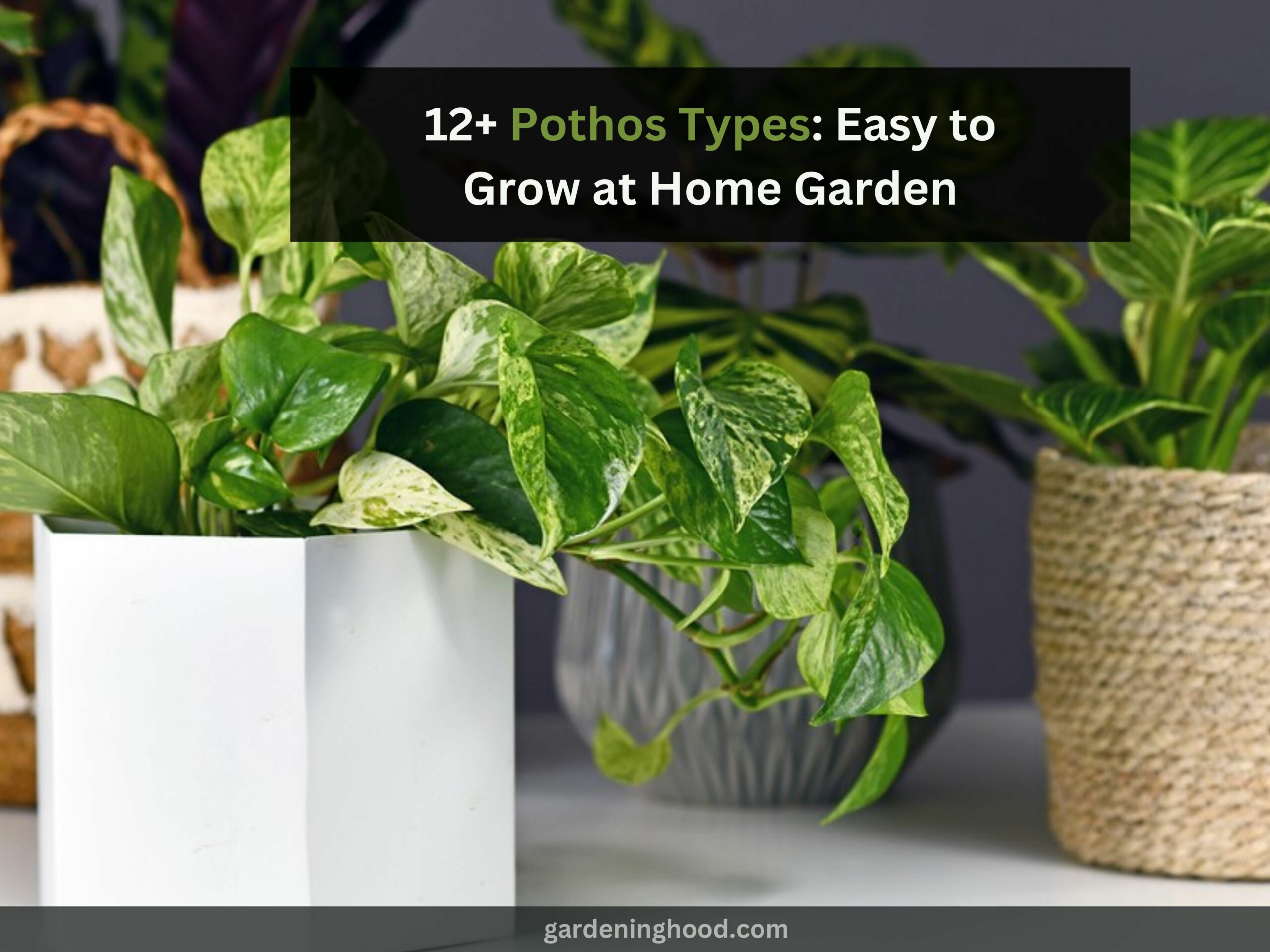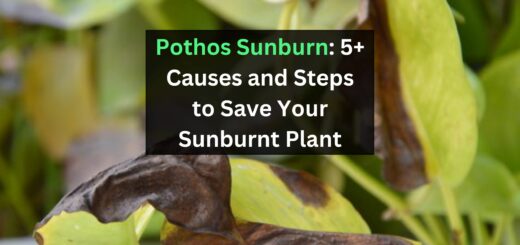Reasons why Pothos Leaves are Curling (And how to fix them?)
This article will be discussing the reasons why Pothos Leaves are Curling. Pothos are all about beautiful leaves and they are easy to grow, which makes them one of the favorites for house gardeners and even beginners. The nightmare comes with the curling of leaves for the plants and gardeners too. The leaves of pothos curl due to many reasons, which we will talk about in this article.
Quick takeaways:
- The downward curling of leaves indicates that the plant is under some kind of stress.
- The pothos hanging leaves curl due to being underwater, getting too much water than they need, too much fertilization, and even the pest infestation can cause the leaves of pothos to curl.
- The high temperature can also be the reason causing the curling of leaves and plants having less water inside the leaves.
Let’s get deep into the causes of the curling of pothos leaves and the remedies.
Reasons why Pothos Leaves are Curling
1. Underwatering
The photos if they don’t get the proper amount of water, the leaves will start to curl. The roots are sensitive to water and so does the plant. The less water in the soil will let the plant try to retain more water so the leaves will start to curl to avoid transpiration. The sunlight is strong can also lead to the drying of the leaves and also plants. It is important to look at the soil if the soil is too dry. Add water as soon as possible so that the plant doesn’t die.
How to fix this?
The pothos plant needs water more often in the spring and fall seasons. The watering should be done near the soil and make sure the leaves don’t get wet. The pothos plant in summer or wintertime needs water after a week. In spring or fall, watering every 4-5 days is more than enough. The soil should be checked properly if the soil is dry and needs to be watered. You can do a finger test if the 1-2 inches of topsoil is dry and watering needs to be done.
2. Overwatering
Another reason that pothos leaves are curling just like satin pothos is due to their being overwatered. The soil stays soggy due to the least drainage and wet overwatering can lead to troubles for the pothos. The soil standing in water can also block the oxygen due to which plants are unable to absorb the nutrients and water. The leaves of the plant will also show drooping and yellowing of leaves if overwatered. The root rot is again visible if the pothos is overwatered as you observe root rot in the money tree. So avoiding overwatering is important.
How to fix this?
If the top inches of soil looks moist then avoid watering the plant. Avoid using too much clayey soil which has the least drainage. Good drainage is also important to keep the plant from overwatering. In the case of pots, drainage holes should be there.
3. Overfertilization and nutrient deficiency
Having too much content in soil or nutrients can be equally destructive like being nutrient deficient. Soil being less fertile can weaken the pothos. The calcium or phosphorus in soil not being in optimum quantity can lead to the curling of pothos leaves. Overfeeding the pothos can indicate the same problem. When they are over-fertilized the pothos leaves curl upwards and downwards when nutrient deficiency there. The growth gets stunted, and leaf drops are the symptoms seen in such cases.
How to fix this?
Use balanced liquid fertilizer and use it to fertilize the soil one time every month so that fertilizer shock doesn’t occur. Mostly in winter times, it is suggested to not fertilize the pothos plant. Also, flush the over-fertilized soil by adding water via potting mix and drain then naturally through the space or holes.
4. Heat stress
The high temperature again can make the pothos leaves curl. Excess moisture is being evaporated from the leaves which makes them defend themselves by curling from the transpiration. Other than curling of leaves you get to see symptoms like yellowing of leaves, stunted growth, etc as well.
How to fix this?
Provide the pothos with a good amount of shade during the peak hours of sunlight. Move to the spot where the plant can get shade as well.
5. Low level of humidity
The air being too dry and hot can easily dry out the water present in the leaves and force them to curl their surface to prevent such water loss. The pothos starts to look dull and lifeless due to the low level of moisture in the air.
How to fix this?
Spray some water over the plant if the leaves are looking too dry and so does the plant, spraying them a few times a week will keep them moist and healthy. You can move them to areas that have high humidity like bathrooms as well.
6. Using a small pot
The pothos plant getting rootbound is another common cause behind the curling of its leaves just like the philodendron leaves. Using a pot of small size can make the roots of pothos get bounded and not able to extend which fails them to absorb the water and nutrients. The plant stays thirsty for a long time and the leaves start to indicate the thirst via curling. The roots then start to come out from the drainage hole and get stuck in the pot, which can irritate them.
How to fix this?
The plant needs to be moved to another pot that is larger and has proper drainage holes. The wearing should be done according to the moistness of the soil. The plants should be moved from open windows to warmer areas.
7. Pest infestation
Curling of pothos leaves can be due to these being attacked by pests like aphids, thrips, spider mites, etc. The pests suck the sap of the plants and make them weak. It’s like the food or water the plant absorbs gets used by the pests as they suck on them. The leaves will again curl due to not getting enough water and spots on the leaves will also start to occur.
How to fix this?
Use a water spray through the hose, wash them off, or remove them manually to save the pothos. Use pesticides like organic ones or neem oil to get rid of these pests. Using insecticidal soap is also effective.
Wrapping up the context
The article was about the curling of pothos leaves and related issues, about how to fix these like a pro. We hope this information was helpful to you to keep the curling issue away from your pothos pants. We are happy to help you guys. Enjoy your beautiful photos!
FAQ
What does a dying pothos plant look like?
The stem of the pothos plant starts to look weird and distorted with improper structure, which means the plant is in danger and about to die. The plant seems lifeless and starts to turn black to brown. The dying pothos in many cases will show spots on the leaves as well.


